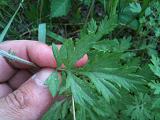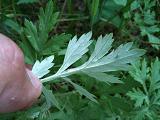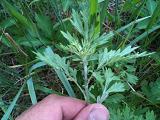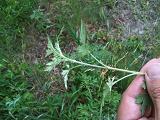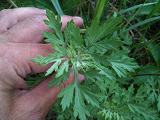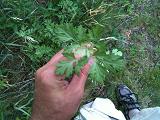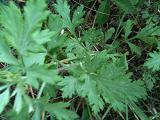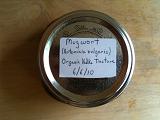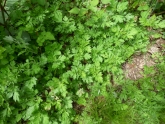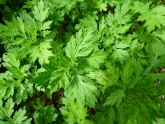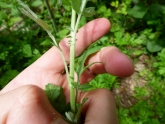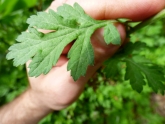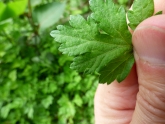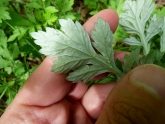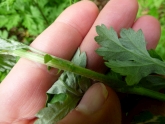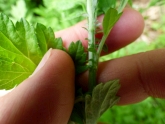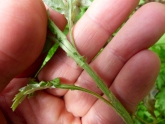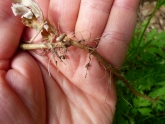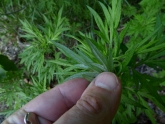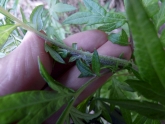Young Mugwort Leaves Intermediate-Aged Mugwort Leaves Older Mugwort Leaves
Common Ragweed (Ambrosia artemisiifolia) leaves have some similarity to Mugwort. Carefully compare the top two images of the Mugwort leaves (above and to the right) with images of Common Ragweed. Notice how the leaves for Common Ragweed are much more dissected (larger cut-out sections of the leaves) and that the tips of the leaves for Common Ragweed are more rounded. After looking at these pictures, it should be very easy to differentiate Mugwort and Common Ragweed.
Mugwort (Artemisia vulgaris) is one of several Artemisia species in New Hampshire. Three species have similar leaves to Mugwort: 1) Absinthium (Artemisia absinthium). Notice in the picture of Absinthium to the immediate the right how both the front and back of the leaves are silver and that the edges are much more rounded than Mugwort. 2) Biennial Wormwood (Artemisia biennis) has leaves cut similar to that of Mugwort, but Biennial Wormwood is a more erect plant with a thicker stem and shorter, feathery leaves with a large number of lobes and cut almost to the midrib. Biennial Wormwood is a taller and thinner plant (in outline), while Mugwort leaves grow out further from the stem making the plant wider and more like a bush. 3) Roman Wormwood (Artemisia pontica) has leaves that are Grayish Green while Mugwort leaves are green in the front and silver and hairy on the back. The picture to the far right is a recent image of a Common Ragweed leaf.
Finally the Mugwort leaf has some slight similarity to the garden chrysanthemum leaf. In the image to the right, you can see the leaf of one chrysanthemum, Feverfew (Tanacetum parthenium). Notice that it has more teeth along the dissected edges. In addition, garden chrysanthemum leaves are only slightly hair beneath while Mugwort has a very hairy silvery coating beneath that can feel like velvet.
